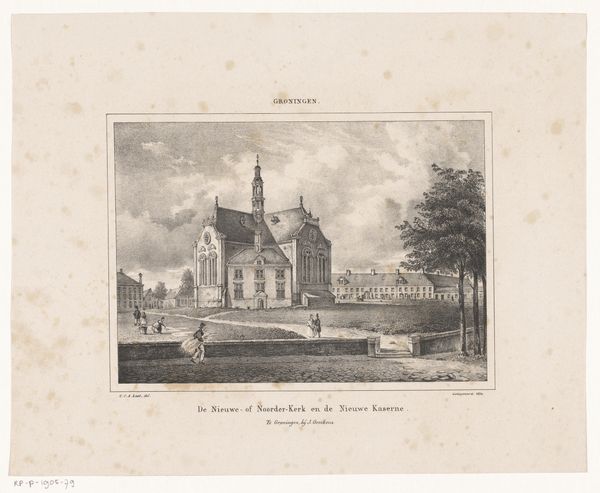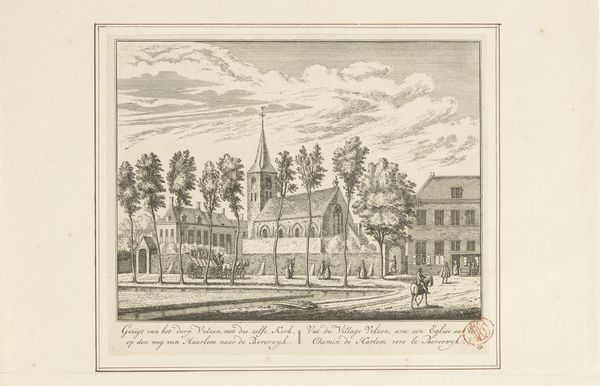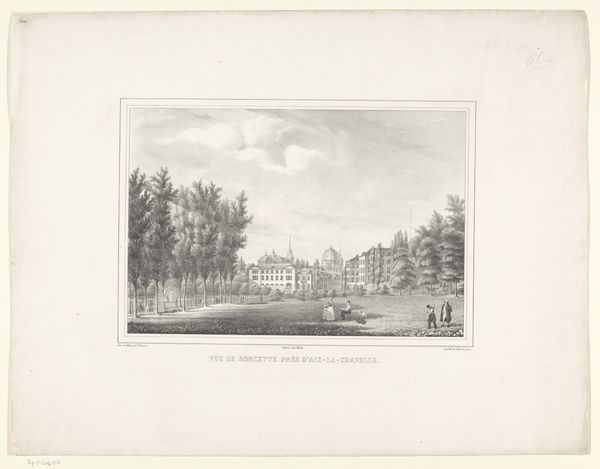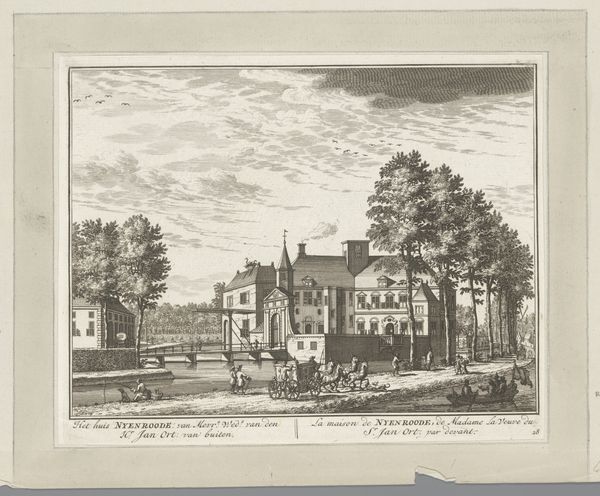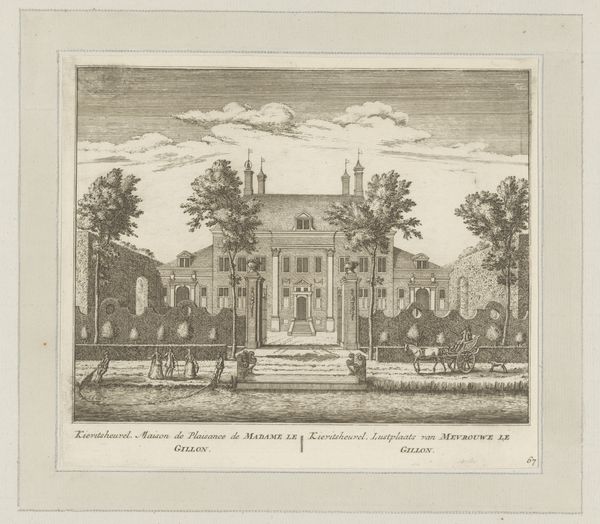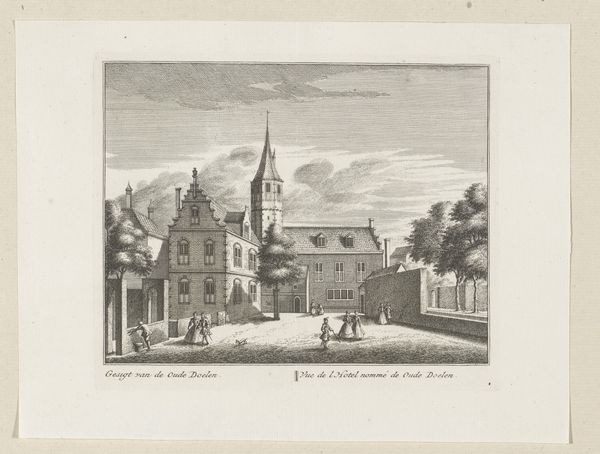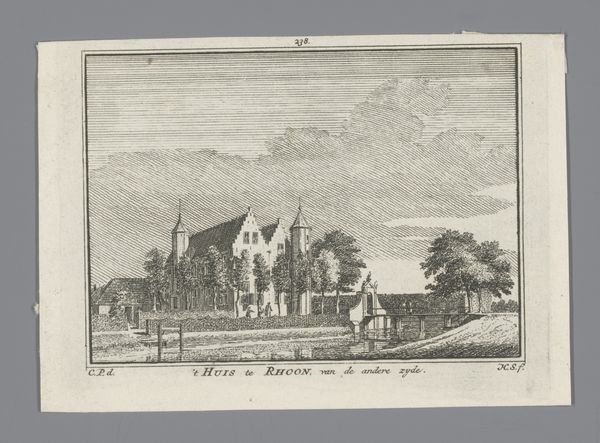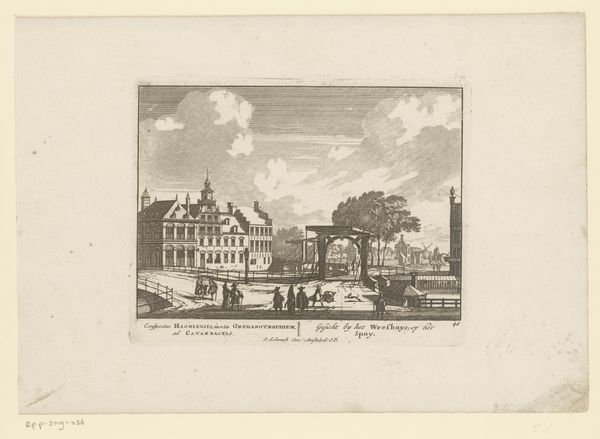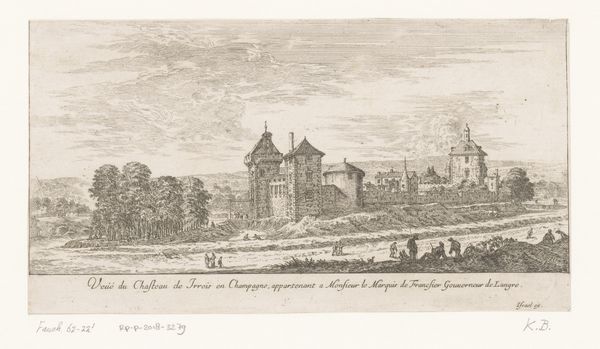
print, paper, engraving, architecture
#
16_19th-century
# print
#
landscape
#
paper
#
romanticism
#
19th century
#
cityscape
#
engraving
#
watercolor
#
architecture
Dimensions: height 260 mm, width 335 mm
Copyright: Rijks Museum: Open Domain
Curator: Here we have a print entitled "View of Castle Wulven near Utrecht," dating from between 1813 and 1847. Editor: My first thought is one of tranquility. There’s something about the composition, the balance of the architecture with the surrounding nature, and the almost monochrome palette, that evokes a sense of stillness. Curator: Indeed. The print reflects the prevailing Romanticism of the period. Castles and idealized rural settings resonated with notions of national identity and a longing for an imagined past, particularly potent in the wake of the Napoleonic era. Editor: The execution itself is noteworthy. The fineness of the engraving captures intricate architectural details—the stonework, the windows—but softens the overall image through a masterful modulation of light and shadow. Look how the artist articulates volume and form using primarily gradations of tone! Curator: And don't overlook the implications of making this site visible to a broader audience. Printmaking facilitated the dissemination of imagery, transforming regional landmarks into symbols of national pride, subtly shaping collective identity and fostering a shared cultural memory. Editor: Yes, but within that context, notice the formal asymmetry. The tower draws the eye, then it roams freely among other structural levels, encouraged to weave among forms lacking sharp tonal contrasts. This directs an artful visual energy! Curator: What might appear, on the surface, as an objective record becomes a potent symbol laden with cultural significance. It goes beyond mere documentation; the artist, Michel Mourot, participates in constructing a visual narrative celebrating Dutchness at a pivotal historical juncture. Editor: The interplay of line and tone is definitely evocative. One is almost able to breathe in the crisp, damp air, sense the textures of stone and bark. I particularly admire the balance that draws me into contemplation, encouraging sustained looking, beyond initial viewing. Curator: That’s the power of art: its capacity to engage, to provoke thought and feeling, to illuminate aspects of ourselves, the times we inhabit, and the spaces that surround us. Editor: Absolutely, whether we approach art from historical contexts or simply allow its aesthetic qualities to resonate and reveal themselves.
Comments
No comments
Be the first to comment and join the conversation on the ultimate creative platform.
